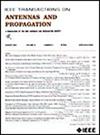Design Considerations and Propagation Properties Using an SDN-Controlled RIS for Wireless Backhauling
IF 4.6
1区 计算机科学
Q1 ENGINEERING, ELECTRICAL & ELECTRONIC
引用次数: 0
Abstract
With the rising need for robustness and safety in fifth-generation (5G)/sixth-generation (6G) backhaul communication between radio units (RUs), the significance of reconfigurable intelligent surfaces (RISs) becomes crucial. While several studies have addressed RIS application scenarios between RU and user equipment (UE), there is currently a lack of published research on implementing RIS in a wireless backhaul system, strategically managed by a software defined networking (SDN). This article investigates the factors that influence RIS realization and application, such as gain, far-field, losses, and communication metrics. Moreover, application and scaled-down demo scenarios are proposed:使用 SDN 控制的 RIS 进行无线回程的设计考虑因素和传播特性
随着无线电单元(RUs)之间的第五代(5G)/第六代(6G)回程通信对鲁棒性和安全性的需求不断增加,可重构智能表面(RISs)的重要性变得至关重要。虽然有一些研究已经解决了RU和用户设备(UE)之间的RIS应用场景,但目前缺乏关于在由软件定义网络(SDN)战略性管理的无线回程系统中实现RIS的公开研究。本文研究了影响RIS实现和应用的因素,如增益、远场、损耗和通信指标。此外,还提出了应用和缩小的演示场景:$ {\mathrm {2}} \times \, {\mathrm {2~\text {m}}}$用于实际回程应用;$ {\mathrm {10}} \times \, {\mathrm {10~\text {c}\text {m}}}$用于28ghz的演示案例。本文还探讨了应用场景,包括通过在无线回程系统中部署RIS来增强物理层安全性、提高系统弹性以及临时增加容量。此外,该研究还探讨了控制整个无线回程系统的动态SDN方面,为RIS集成提供了全面的视角。这些发现强调了RIS在解决无线通信中的关键挑战方面的重要性。
本文章由计算机程序翻译,如有差异,请以英文原文为准。
求助全文
约1分钟内获得全文
求助全文
来源期刊
CiteScore
10.40
自引率
28.10%
发文量
968
审稿时长
4.7 months
期刊介绍:
IEEE Transactions on Antennas and Propagation includes theoretical and experimental advances in antennas, including design and development, and in the propagation of electromagnetic waves, including scattering, diffraction, and interaction with continuous media; and applications pertaining to antennas and propagation, such as remote sensing, applied optics, and millimeter and submillimeter wave techniques

 求助内容:
求助内容: 应助结果提醒方式:
应助结果提醒方式:


